A Refresher On Tarpon
Tail Fly Fishing Magazine
Tarpon photos by Brian O’Keefe
Fly photos by Flyboss
The strike and ensuing battle with a tarpon is a difficult moment to capture in words. They are aggressive, explosive and acrobatic. Because of the challenge of catching them and their strength, stamina, and fighting ability, tarpon are considered one of the world’s premier game fish, and one of the greatest tests of a fly angler’s mettle. Tarpon fishing can also be incredibly frustrating and challenging, but many people say that if they had to choose one species to target for the rest of their lives, it would be tarpon.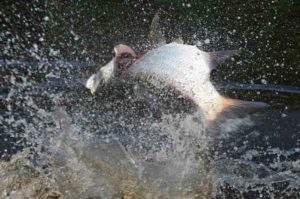
Atlantic Tarpon (Megalops Atlanticus) are found on the western Atlantic coast from Virginia to Brazil, and throughout the Gulf of Mexico and the Caribbean. Tarpon are also found along the eastern Atlantic coast from Senegal to South Angola. They can survive in brackish and even fresh water, and can live in habitats with low oxygen content because of their swim bladders, which they can use to breathe air by rolling on the surface. The habitat of tarpon varies greatly, and depends largely on the developmental stage that they are in. While they appear as tiny leptocephalus larvae for about a month after hatching, tarpon can eventually grow to lengths of more than eight feet and weigh more than 280 pounds (with the females growing larger than males), though the average fly caught fish is under 100 pounds. They grow very slowly after a rapid initial growth of about 12 inches in the first year. It takes eight to ten years for them to reach sexual maturity, and it is believed that tarpon can live upwards of 80 years (the oldest tarpon in captivity lived to be 63 years old, and died after leaping out of its tank). As they progress from the juvenile stage to adulthood, tarpon move to larger bodies of water and eventually the ocean, though some remain in backwater habitats, and some fish migrate while others seem to stay put. Regardless of the size of the fish and where you target them, tarpon are surely one of the best fish to catch on a fly rod.
“Laid up” Tarpon
Small, mid-size or large tarpon that like backwater mangroves, canals, brackish lakes, lagoons or the flats. They will move around the area in search of food, but generally stay put, “laying up” in one spot for long periods of time or cruising in the same area, making them a challenging and fun target for anglers. Some of these fish will eventually become migratory, though it appears some adult tarpon do not migrate.
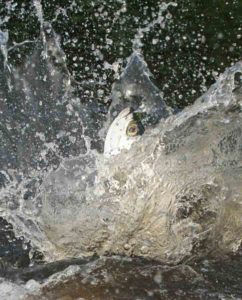 Baby Tarpon
Baby Tarpon
The small juvenile tarpon are a great deal of fun to catch. They are frequently found in the safety of the mangroves and the nearby flats, which allows them to avoid large predators while finding plenty of food. They are voracious eaters and highly sought after by anglers. If you are just getting started with tarpon fishing on a fly, baby tarpon are a much more forgiving target than their adult counterparts, but still wildly acrobatic and a lot of fun to catch. The very small fish tend to live in areas with a great deal of mangrove cover and often very little oxygen. As they grow, they tend to move into slightly areas.
Resident Tarpon
Mid-size to large fish which don’t migrate (or haven’t yet). Tarpon are opportunists, and these fish tend to stay in one area where food is plentiful such as near filleting tables by a dock, under bridges or near waterfront restaurants. Most agree that they will eventually leave to either reproduce or become migratory, but it’s hard to know for sure. These fish aren’t regularly targeted by fly anglers because of both the difficulty of catching them around structure and because fishing in these areas is generally frowned upon.
Migrating Tarpon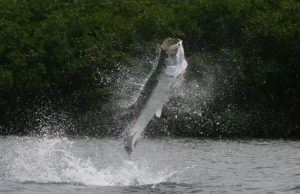
This is what anglers fantasize about, and is the reason many people travel from all over the world to visit places like Florida in the spring: a school of tarpon, 20-30 strong (but sometimes numbering in the hundreds), averaging 50-120 pounds and swimming across the flats in schools or strings. These fish are hungry, aggressive and will give you the fight of your life. It is believed that tarpon breed offshore in deep water, something that initial research seems to confirm. Despite there being seemingly distinct populations and migrations of tarpon, it turns out that all tarpon are part of a shared genetic population. As tarpon migrate, they tend to settle into areas with warm water and plentiful bait, and there can be fish in many different parts of their range at the same time.
The Gear
The fish size and where you are fishing will determine the rod, line, leader and fly that you should use. Generally, 6-8 weight rods are appropriate for smaller tarpon and 10-12 weight rods work well for the larger fish. We like a 12-weight for tarpon in the Florida Keys and Biscayne Bay and a10-weight for Thousand Islands and the west coast of Florida. It can vary in other locations; Costa Rican guides laugh if you try to use anything less than a 12 weight, and they’re not just messing with you, given that some record-size tarpon have been caught near there. A fish caught in Rubane, Guinea-Bissau holds the all-tackle world record for tarpon at 286 pounds, and some fish have been caught and released in a number of locations that could have topped that record.
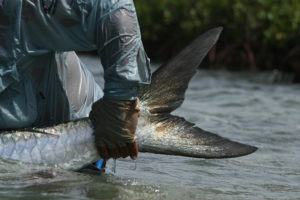
Flies
Flies vary depending on location and prey species, but some commonly used flies for tarpon include:
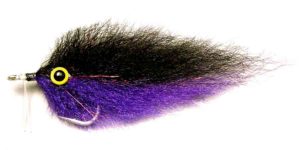
Puglisi Peanut Butter Fly
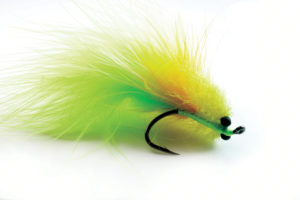
Tarpon Toad
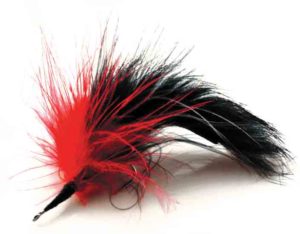
Tarpon Bunny (AKA Bunny Toad)
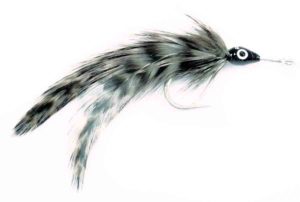
Cockroach Fly
Selecting a fly depends on many factors including water clarity, water depth and light situation. A general rule of thumb is to use a dark fly in low light situations and a lighter fly in bright light. Another major consideration is water depth. A toad will suspend about 8-10 inches below the water surface in the mid-column, so it works best in intermediate depths up to about four feet. Clousers sink and are better suited for deeper water situations and channels. Gurglers are surface flies and can be used in deeper water or skinny water, and are popular for smaller tarpon near mangroves. Unfortunately, it is not math, so there is no exact formula. Be sure to read up on whatever location you are fishing!

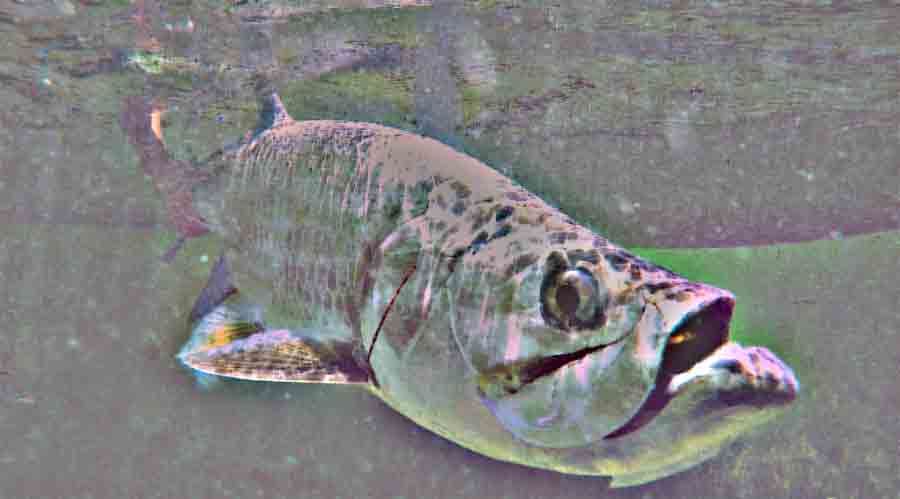
 SUBSCRIBE TO READ MORE
SUBSCRIBE TO READ MORE
Great, very helpful article. Thanks. I make my initial tarpon trip next week at Mexico Beach. Wish me luck!
Good Luck! Just remember….it’s just fishing.
Where can I purchase a Puglisi peanut butter tarpon fly?
Most of the local fly shops carry EP flies.
You can also visit https://www.epflies.com/estore/18818/173918